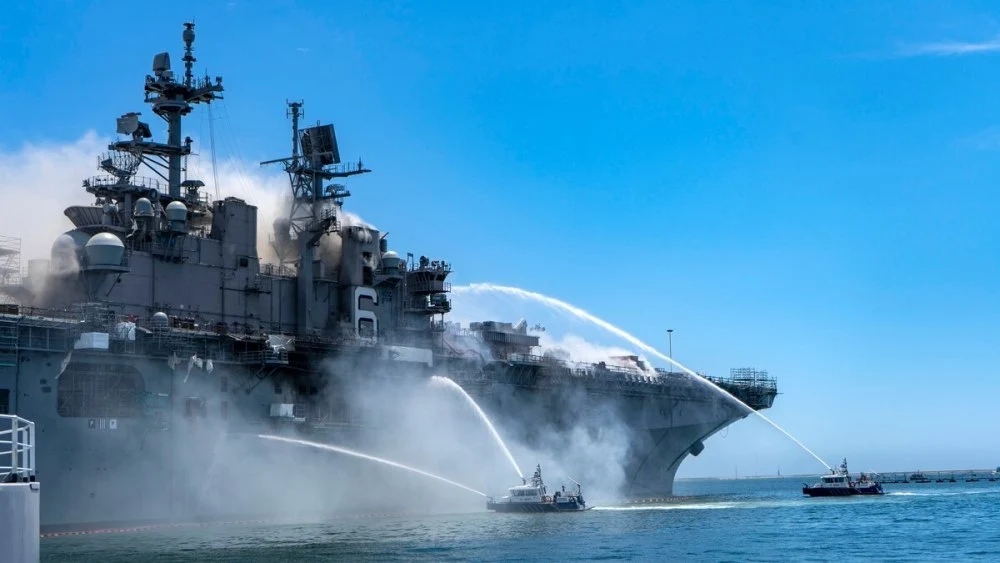
By Liu Jixi and Li Jian
The fire that engulfed the amphibious assault ship USS Bonhomme Richard for more than four days was finally put out, announced the US Navy on July 16. Firefighters were conducting a comprehensive inspection onboard the ship and would investigate the reason for the fire and ship damages later, said Rear Adm. Philip Sobeck, Commander of Expeditionary Strike Group Three of the US Navy, adding that the ship was recoverable, but it wasn’t decided whether to recover it or not.
Officially commissioned in 1998, the Wasp-class amphibious assault ship has a displacement of more than 40,000 tons with about 1,000 sailors onboard, costing up to USD750 million back then. USS Bonhomme Richard began to undergo a major upgrade at the Naval Base San Diego, California, in 2018 to carry the new F-35B short takeoff/vertical landing (STOVL) aircraft. The fire broke out when the two-year overhaul was about to wrap up.
As the most potent maritime force in the world, the US Navy has been plagued by accidents continuously in recent years.
First of all, there have been constant fire accidents at repair plants. The USS Bonhomme Richard amphibious assault ship at Naval Base San Diego, in California, for instance, exposed severe problems in fire prevention management when US naval ships are berthed. The shortage of personnel onboard during berthing and their lack of experience, as well as the inadequate response and outdated firefighting equipment, have made it difficult to put out the fire immediately.
Second, regular voyage bumps into frequent accidents. In 2017 alone, six accidents were reported on American naval vessels on the West Pacific, most of which were low-level accidents like ship collision. The reason is that while the serving ships in the US Navy are most advanced in the world, they are also the busiest, which cannot help but feel strained due to their “freedom of navigation” operations worldwide. Besides, the frequent accident also points to the poor operation of the sailors.
At present, the COVID-19 pandemic is still running amuck across the US, with the US Navy and overseas troops being so severely hit that they can barely sustain. There was a time when all of America’s aircraft carriers in the Pacific region were stranded, and the captain of USS Theodore Roosevelt was dismissed for revealing the pandemic situation on the aircraft carrier. That simply added fuel to the flames for the US Navy that was already under strain maintaining its global hegemony.
On the surface, the high frequency of accidents on American naval ships is attributed to inadequate training, slack management, loose combat preparedness, and poor logistics support. On a deeper level, however, it reflects the US Navy’s petrification of strategic thinking and the inability to maintain the global hegemony with limited forces.
The US military has the world’s strongest maritime forces, which, however, cannot endure the increasingly complex and onerous tasks. The US Navy’s resources and capabilities obviously cannot meet the country’s ingrained objective of being dominant on the sea. That the US Navy is carrying out the so-called “freedom of navigation” operations more frequently reveals its hegemonic nature to the fullest and also brings to the fore the rising contradiction between its “capacity” and “desire”.
The fire on the USS Bonhomme Richard has dealt another blow and given a new warning to the US Navy. If the US military still holds on to its outdated hegemonic mindset and pursues the so-called “absolute superiority”, it will not only continue to face the severe personnel shortage but also be doomed to walk from boom to bust.
(The authors are from the Chinese People's Liberation Army (PLA) Naval Military Studies Research Institute)













